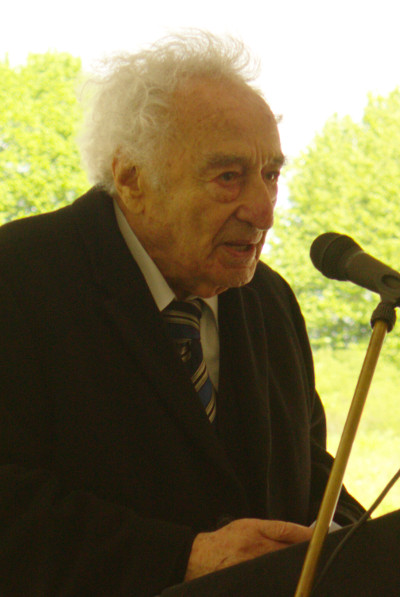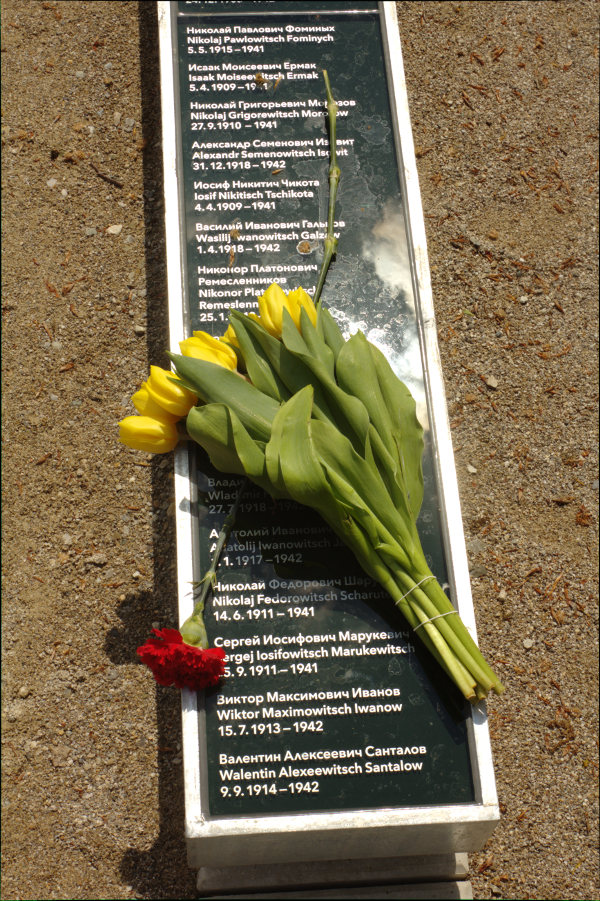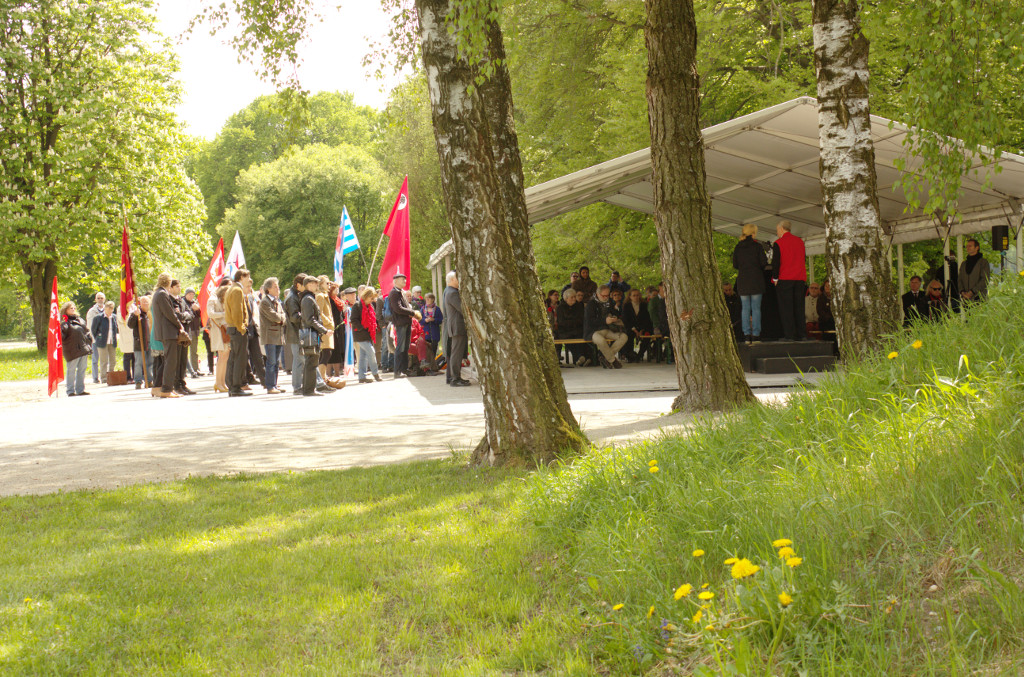 Shooting Range Hebertshausen
Shooting Range Hebertshausen
In 2014, a memorial was made for
the 4000 Soviet prisoners of war
that were murdered here between 1941
and 1942.
Shooting Range Hebertshausen
 Max Mannheimer at the former. „SS-Schießplatz Hebertshausen" 2.5.2014.
Max Mannheimer at the former. „SS-Schießplatz Hebertshausen" 2.5.2014.
"Already in the first months of the German-Soviet war, more than two million Soviet prisoners of war died of starvation in the camps of the Wehrmacht . Around one million people lost their lives in the 900-day hunger blockade of Leningrad. Hundreds of villages have been destroyed in Belarus for alleged partisan suspicion. Hundreds of thousands of Soviet Jews had been killed in just the first months of the war by the death squads of the Einsatzgruppen.
Despite the enormity of these crimes, this extermination war against the Soviet Union plays only a secondary role in the memory policy of the Federal Republic of Germany . This can also be seen in the dealing with the former "Shooting Range Hebertshausen".
Here, more than 4,000 Soviet prisoners of war were murdered by the Dachau SS men from 1941 to 1942. However, after the liberation of certain anti-communism of the "Cold War" the political mood in the newly formed Federal Republic. The memory of German crimes and the murder of Soviet prisoners of war, however, was completely replaced.
The memory of the murder victim in the "shooting Hebertshausen" held almost exclusively German survivors of the concentration camp awake, many communists who had opposed the Nazi dictatorship. This was also the camp community Dachau, which was built in 1964, the first monument here at this point ".
| Mai 2014 |
"My special thanks in this regard, to the head of the Gedenkstätte Dr. Hammermann and her employees who have achieved an outstanding exhibition for this memorial. With it visitors are fully informed clearly and with scientific accuracy of the historical background of the murders on the "Hebertshausen Shooting Range"."
The harsh story of eyewitness Josef Torah |
|
In one of the shooting lanes the trucks with the Russian prisoners of war drove backwards in. The prisoners had to jump out of the truck and line up in rows of five people. Then the order was given that all prisoners of war had to strip naked. On the walls were some SS soldiers with machine guns ready.
A group of 5 SS men each took a prisoner of war by the hand and led those on the run from this shooting lane to the other in order to bind them to about 1 m high wooden stakes located in the front part of the shooting range . For this purpose, apparently own devices were made, because it went very quickly. Next the SS men moved away and in a distance of about 15 m, a group of to my knowledge, 20 armed SS men lined up. By command each of these SS men fired a shot. A large part of the 5 prisoners fell immediately, but slowly to the ground. If still remained standing, the head of the command ran forward and gave the prisoner in question a shot in the neck. Then the firing squad stepped aside and another group of SS men dove to the prisoners shot, to load them on a trolley. Then they drove the bodies out from the shooting lane and threw them on a heap." |
|
Eyewitness Josef Torah in his testimony before the District Court of Nuremberg in 1950 |

"The criteria on which the Wehrmacht and the SS had agreed to assassinate Soviet prisoners in Dachau and other concentration camps, reflect the anti-Soviet and anti-Semitic enemy of the Nazis: so especially Communist officials, intellectuals and Jews were the murder victims.
But the Nazi perpetrators wanted the Soviet prisoners of war not only killed. But also aimed at wiping out their names, and all memory of the individual victim; prisoners of war were cremated and their ashes buried anonymously at the crematorium of the concentration camp.
All the more reason to praise the effort of the researchers that have managed on behalf of the Memorial Site, to determine to this day 900 victims names from oblivion. I think it is important that in the exhibition, individual biographies of prisoners of war are presented. For visitors can get a picture of the lives of these people and learn as individuals at the "shooting range Hebertshausen".
At the same time, I appeal to the different archives in Germany, Belarus, Ukraine and Russia, to support the efforts of the memorial, hence the missing names can be found. "
 |
"at a meeting with the Presidents of the International survivors associations in Berlin, we have formulated in our" legacy " what the former camp "stone witnesses " represent: "They are crime scenes, international cemeteries, museums and places of learning. they are evidence against denial and trivialization and must be maintained in the long term." "shooting range Hebertshausen" is such a testimony. So I hope, and I would like to conclude that the now-designed memorial helps to give greater prominence in the center of public consciousness to the memory of the many Soviet victims of the Second World War."








